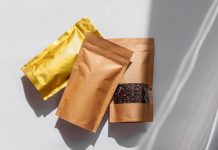The custom packaging industry just keeps evolving, and the number of brands looking for custom packaging keeps increasing. However, the packaging isn’t as simple as it sounds, and terms like paper weights and paper grades are essential to understand. Truth be told, these paper grades and weights can be challenging and confusing to understand. So, if you are stepping into the packaging world, we are sharing everything you need to know about the paper grades!
Paper Weights – Everything You Need To Know
To illustrate, paper weights are designed to help determine the thinness and thickness of the paper, and also show off the durability of paper for packaging purposes. When it comes down to paper weights, it is crucial to understand that there are various measurement methods, but American measurement standards are pretty different as compared to other measurement methods around the globe. This is because, in America, the paper weight is measured and determined through manufacturing origin. However, every other country in the world compares the weight of every square unit of paper. On the contrary, measuring the same paper weight from two different manufacturers can be challenging because the processes are slightly different.
Paper Grades – The Ultimate Guide
If you are concerned about the paper grades, it is generally determined how the paper will be used, such as offset uncoated papers and opaque papers. To begin with, the offset uncoated paper is known for large volume grade of paper and is used for archival purposes. That’s because this paper grade is made to have a higher alkaline level rather than acidic, which results in higher longevity and better appearance of the paper. In addition, these papers have internal component bonding, which improves the durability even more. For the most part, the weight ranges from 50lbs. to 80lbs. It can be enhanced and finished with different finishes, such as vellum finish, smooth finish, and linen finish.
On the other hand, there is an opaque paper that generally has similar weight measurements, but the quality of pulp is much better. As the name suggests, the opaque paper has high-end opacity, which means it’s not see-through. If you are concerned about the finish, it can be finished with a film coat, satin finish, protective coats, and protective coats. Thirdly, there are writing papers which are commonly known as bond papers or correspondence papers. These papers are regularly used in printers and are used for handwritten notes and corporate/business letters. These papers can be adorned with watermarks, and cotton fibers can be added to enhance the classy appearance and strength.
Last but not least, there are cover papers and text covers which are known to be the most premium papers with uncoated designs. These cover papers are generally used for business cards, brochures, and report covers. Moreover, it’s a suitable choice for presentations and is available in a wide range of patterns, finishes, and colors.
Types Of Paper Grades Used In Packaging Business
It’s pretty evident that there is an extensive range of papers available, and one can easily get frustrated and overwhelmed by the choices. However, there are different points that will help you understand the paper’s grade. For the most part, the paper’s or material’s thickness is measured by PT unit or GSM unit. Simply put, the thicker material will result in more weight sustainability and durability. So, if you are deciding between different paper grades, we are sharing the top four grades that should be considered, such as;
CCNB
It is defined as clay coated news backboard which is made with a combination of old papers, wasted corrugated boxes, and recycled newspaper (you might even know them as CCNB cartons). This is one of the most cost-efficient and reasonably-priced options for printing purposes. The paper grade has the capacity to absorb moisture and water, which means you should keep your product in mind. For the most part, the foldable boxes and cartons are manufactured with this paper. To be honest, this isn’t exactly the top-notch material for obvious reasons. In addition, it cannot hold much weight but is suitable if you want quick, affordable, and convenient packaging. If you are concerned about boxes, they can be used for packing dry goods, pet food, beans, noodles, and detergent.
FBB
These are the folding box boards that are manufactured with a combination of mechanical materials as well as chemical materials. It uses a variety of processes to design pulp material, and different layers will enhance the thickness, durability, and strength of the packaging. For the most part, the chemical layer of the paper is bleached, which provides the right surface for designing exceptional prints. This material tends to be stiffer as compared to other paper grades and is suitable for cosmetic, food, and pharmaceutical product packaging.
SBS
It is defined as a solid bleached sulfate board and has become an ultimate packaging paper for product packaging. The paper’s fibers are chemically pulped and bleached. Then, the bleached pulp will be shaped into the boxes. For the most part, these boxes have a white interior and exterior, which makes them suitable for printing. In addition, it can be worked with hot foil stamping, spot UV printing, de-bossing, embossing, and more. For the most part, the custom boxes are designed with SBS paper and can be used for personal care products, food products, and other product packaging.
CUK
This is the coated unbleached kraft paper and it’s made from completely recycled materials, which makes it a suitable choice for eco-friendly brands and products. This paper grade is suitable for food products and can resist tearing, given the top-notch strength standards. In addition, the high-strength design makes it suitable for beverages as well as cosmetics. On top of everything, the material can be coated with kaolin clay which supports the printing quality and improves the surface support.
Understanding these four basic paper grades will surely help make a decision, and we are certain you won’t be as confused. So, read through this article and click here WeCustomBoxes.com to get more help regarding packaging and the right paper grade!
Disclaimer: This article contains sponsored marketing content. It is intended for promotional purposes and should not be considered as an endorsement or recommendation by our website. Readers are encouraged to conduct their own research and exercise their own judgment before making any decisions based on the information provided in this article.





































